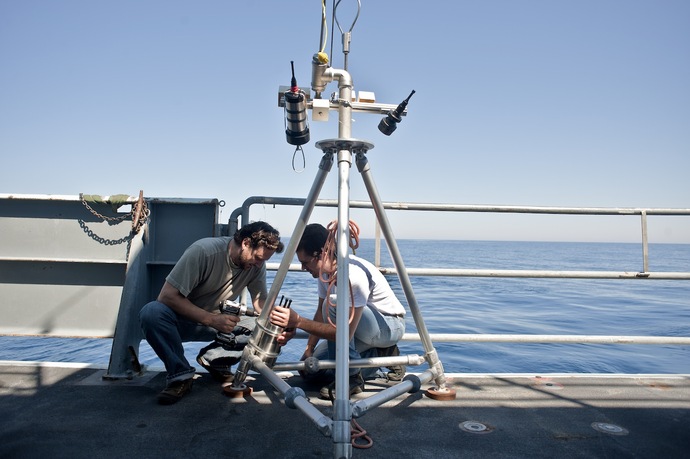- Visions18
- Visions17
- Visions16
- Visions15
- Visions14
- Construction
- Visions13
- Visions12
- Visions11
-
Enlighten
- As Enlighten '10 Ends
- Exploring an Active Caldera
- Life in the Extreme
- Dive J2-516
- Transforming the ROV Jason
- Weather: Sunday August 15, 2010 ...
- International District to ASHES ...
- A Day Full of Vents and Sunshin ...
- Students at Sea
- Captain's Weather Report
- Weathering a Bit of a Blow
- Details at ASHES
- First Jason Dive at Axial Seamo ...
- David's Spheres
- Newport to Axial Volcano
- Port Call, Newport, Oregon
- Final Science Day Leg 1
- Nice Weather
- Finding a Passion
- Meter-Scale Imaging
- Bubbles from the Seafloor
- Documenting Seep Sites
- Social and Scientific
- Nested Surveys
- Kinship Aboard the Thompson
- Exploring Gary's Bad Hang with ...
August 2010
July 2010
...eventually an entire suite of VentCams will be deployed at many vents and across vent fields using the infrastructure of the OOI Regional Scale Nodes cabled observatory.
Today, Tim Crone, research scientist at the Lamont-Doherty Earth Observatory, deployed the VentCam at a vent called “Medusa” that is located in the ASHES vent field within the caldera of Axial Volcano. VentCam is a prototype seafloor camera system being developed to measure flow rates in black smokers using video-image analysis. Measuring flows in mid-ocean ridge hydrothermal systems is extremely difficult, and few measurements have ever been made. To this day, long-term flow rate records (> ~1 month) have never been collected from any high-temperature seafloor system. The current prototype VentCam represents an important step forward for non-invasive and non-destructive monitoring of these flows. In the not-so-distant future an entire suite of VentCams will be deployed at many vents and across vent fields using the infrastructure of the OOI Regional Scale Nodes cabled observatory. This work will help characterize the nature of hydrothermal fluid flow at several spatial and temporal scales and will bring new and critical insights into the relationships between plate tectonics, ridge crest magmatism, tidal forcing, fluid flow, chemical exchange, rock alteration, and the diverse ecosystems that thrive in these extreme environments.
Jason dive J2-516 began at 1200h today with the deployment of the VentCam and a hydrophone that Hugo Solis, a new-media artist and UW graduate student, is using to record the sounds of a venting chimney. We are currently completing vertical photomosaics of chimneys within ASHES and are looking for potential drilling targets for the next dive. Tonight, we will examine possible secondary node placement sites within ASHES, locate possible vents on the caldera wall, and continue to map potential cable routes that would run across the caldera floor and would connect a secondary node at ASHES to a primary node on the eastern side of the caldera.


